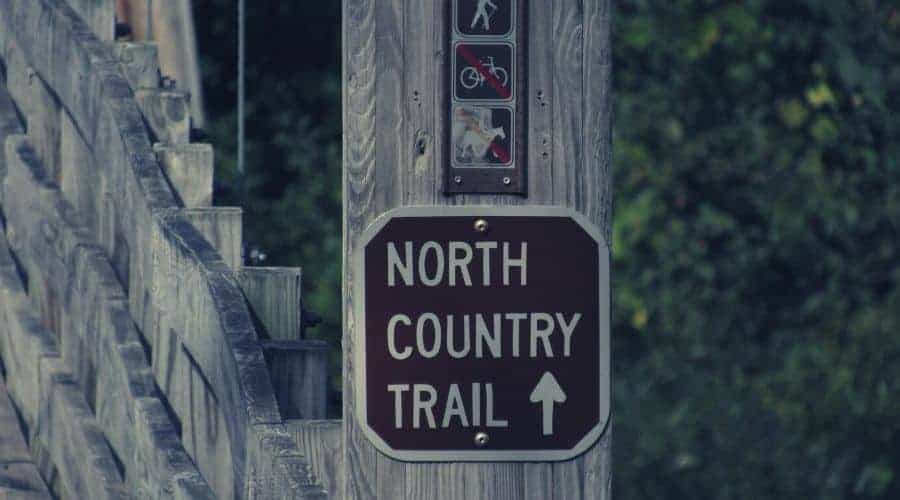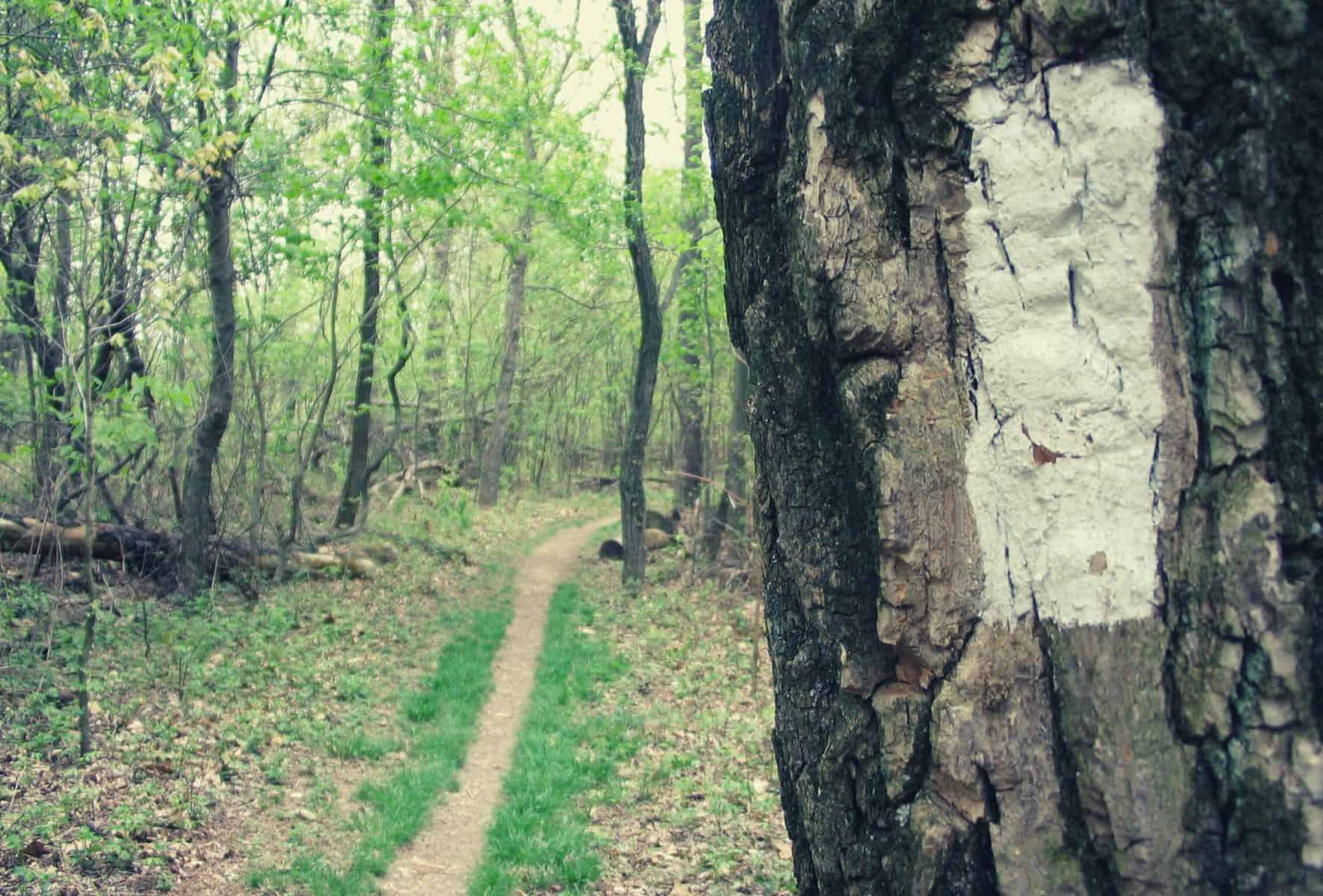When learning how to drive, most of us are put through a fairly rigorous education in road signage and markings before finally getting behind the wheel.
For some reason, the same principle is not applied to hiking and many of us fail to learn the ins and outs of following a trail, putting our faith in our GPS units or hiking watches until the moment arises when having done so might have served us well—i.e. when we’re lost.
In the following article, we aim to do our part to ensure that our readers are equipped with the knowledge required to confidently follow any hiking trail without any such mishaps.
Ready to learn all about trail markers and trail blazers? Let’s do it!
Table of Contents
Hiking Trails Ins and Outs
A little knowledge of the constituent parts of a hiking trail and trail signage can go a long way to ensuring we stay on track while out getting our wander on. Below, offer a short guide to both.
Trailhead
Simply put, a trailhead is the starting point of any hiking trail. Once upon a time, the term was used only to denote trails starting on roadsides but these days has evolved to mean the point of departure of any trail, whether it be in the middle of nowhere or a more developed affair with a parking lot, visitor information kiosk, toilets, etc.

Trail tread and borders
The tread of a trail refers to the surface you do your walking on and is usually—on maintained trails in national or regional parks or other popular walking areas—delineated by a border made with logs, planks, or rocks. On most topo maps, trail treads are represented by a discontinuous black line.
While some hikers are apt to complain that the soils, stones, gravel, or even wood chippings used in trail treads and the materials used for borders are a bit of an eyesore and unnatural-looking, in most cases, they are used as a means of protecting fragile vegetation and limiting erosion. For this reason, following a trail also means sticking within the borders of the established path.
Trail blazes and markers
Trail marking varies greatly from country to country. In many European countries, for example, blaze offers little information other than the fact that you are on a trail—that is, any trail. In Italy, these markings are typically red and white flashes, whereas just over the border in Slovenia blazes are blue and white flashes.
In other countries where the purist ethic is still strong—Scotland, for example—hikers commonly have little else to go by than footprints in the mud left by previous hikers and the odd cairn.
Thankfully, if you are in the United States, say on the Appalachian Trail, then trail blazes are a little more informative, with the painted trail blaze used to mark trails coming in a total of six configurations with different meanings:
How to read US Trail Blaze
Straight on—A single rectangle.
Right turn—Two rectangles forming a right diagonal (with the right rectangle higher than the left).
Left turn—Two rectangles forming a left diagonal (with the left rectangle higher than the right).
Trailhead/Starting point—Three rectangles forming an arrow or triangle pointing upwards.
Trail End—Three rectangles forming an arrow or triangle pointing downwards.
Spur/Junction/Intersection—Three rectangles, with two stacked next to one on the side on which a different trail departs.
If you’re on a trail but haven’t seen a blaze in a while and are beginning to doubt whether or not you’ve wandered off course, take the time to glance over your shoulder from time to time to check on the other side of trees or rocks for blazes marking the way for hikers heading in the other direction.
Trail Signs
In certain highly trafficked areas such as parts of a national park, where the trails are better paved you may find more frequent trail signage in addition to blazes and/or trail markers. These recreation trails often also have multiple “fixed” maps for you to read, particularly at trailheads and junctions.
Cairns
Rock cairns, which consist of several rocks piled or stacked atop one another, have existed since time immemorial as a way of marking trails.
While a degree of controversy surrounds the construction of cairns with regard to their ethics and environmental and aesthetic impact in wild places, when used correctly they are a very useful navigational aid. This is particularly true above the tree line, where blaze is less commonly used or is often painted on rocks that might be covered by snow, frost, or dirt.
When navigating by cairns, it’s always wise to have your map and compass at hand to make sure the “little men” are leading you in the right direction.
Unlike blaze, cairns only indicate the presence of a trail, not necessarily the trail you need or wish to be on, and—particularly in recent years—many a rogue hiker has been known to add their own rock cairns for photo ops, to make improvised tripods for selfies, or out of pure boredom. In such cases, therefore, the very thing you might be relying on to keep you on track might be leading you wildly astray.

